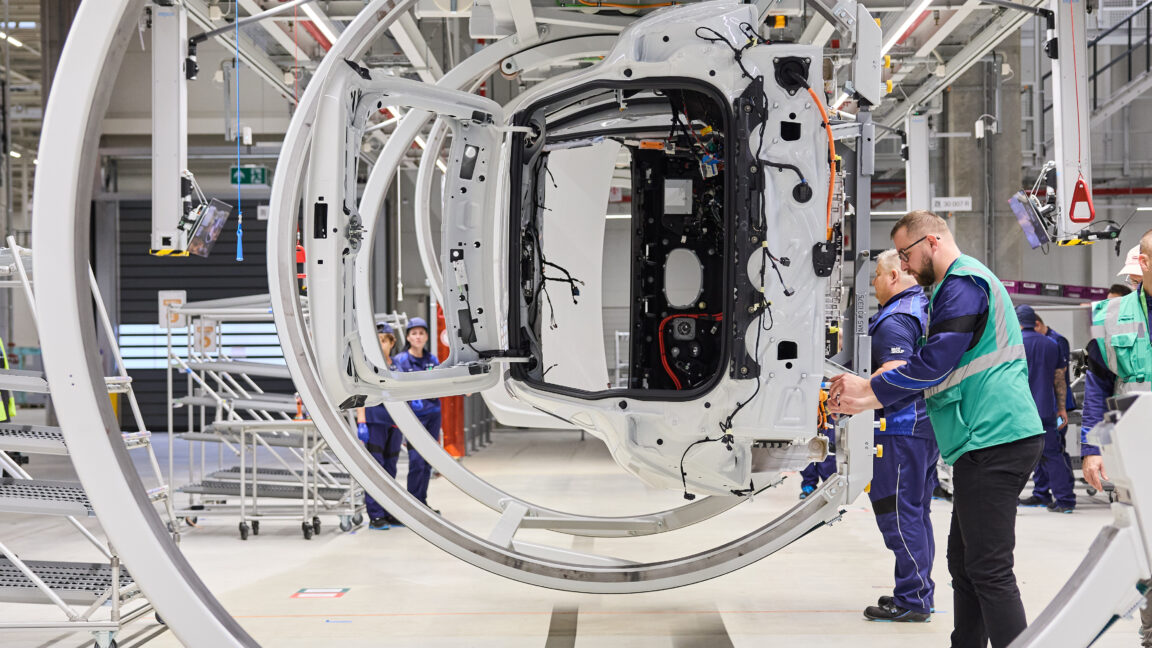
Credit: BMW
MUNICH—BMW's next model launch is an important one. When the new iX3 goes on sale in Europe later this year, then here in North America in 2026, it will be the first of a new family of electric BMWs, built using an advanced new platform known as the Neue Klasse, as an homage to the original Neue Klasse of the 1960s that helped BMW define its image for decades. Some of what we know about the new iX3—including what it looks like—has to remain under wraps for another few weeks, but for now, we can say that this should be BMW's most sustainable production car to date. Here's why.
BMW has always built interesting concept cars, even if some of its ideas—like the fabric bodywork of the GINA Light Visionary Model—have never made it to production. One of my favorite BMW concepts of late was probably the i Vision Circular, which the automaker showed off in 2021—not so much for the car itself but for the construction techniques it previewed, some of which have shown up in the iX3.
That includes the heavy use of mono materials. Making the center console out of just one kind of plastic means it's far easier to recycle at the end of the car's life. BMW also significantly upped the use of secondary materials in the car: About 1,600 lbs-worth (740 kg) is recycled material, including half of all the lithium, cobalt, and nickel in the battery pack; 70 percent of the aluminum in the alloy wheels; and 80 percent of the aluminum in the wheel carriers. The frunk is made from plastic containing 30 percent recycled fishing nets.
Sadly, the US is unlikely to get the Econeer trim, which uses a seat fabric made entirely from recycled PET bottles (instead, we should be getting an eco vinyl option).
Of course, you need to do more than just pick better materials, some of which have been recycled, if you want to seriously dent the carbon footprint of your new vehicle. That's especially true if it's electric—for all an EV's benefits, they remain significantly more energy-intensive to build than a new internal combustion engine vehicle. And automakers do need to make serious dents in their carbon footprints: BMW has to slash its carbon emissions from a 2019 level of 150 million tons down to 109 million tons in 2030. For 2024, it was down to 135 million tons, the company told us.
The Neue Klasse is essential to meeting that goal. The factory in Debrecen, Hungary, is powered entirely by renewable energy, including an entirely electric paint shop, and it generates two-thirds the amount of CO2 as one of BMW's established factories. And the battery pack, which uses an all-new BMW cylindrical cell, has a 42 percent smaller carbon footprint per kWh than the prismatic cells used in BMW's current 5th-generation EVs.
We can't say much about the expected efficiency of the new 6th-gen powertrain until later this month, but we can say that BMW calculates that the iX3 can reach its break-even point with an ICE vehicle within just a year. Charge the car with entirely renewable electricity, and within just 10,900 miles (17,500 km), it's on par with an ICE vehicle; using the normal European energy generation mix, that crossover comes at a little more than 13,300 miles (21,000 km).
At 124,000 miles (200,000 km), the iX3 should have a lifetime carbon footprint of 23 tons (or 14.6 tons exclusively using renewable energy); by contrast, a conventionally powered BMW X3 crossover would have a footprint of 52.8 tons.
Check back on August 25, when we can tell you what else we learned about BMW's next EV crossover.

-
 C114 Communication Network
C114 Communication Network -
 Communication Home
Communication Home


